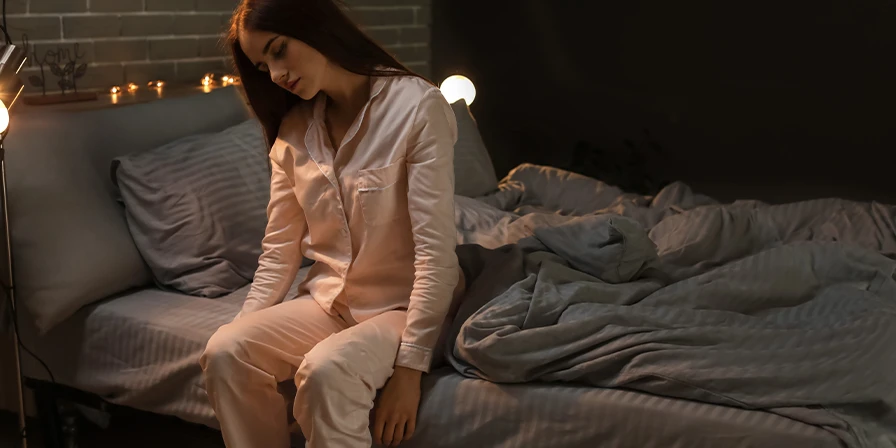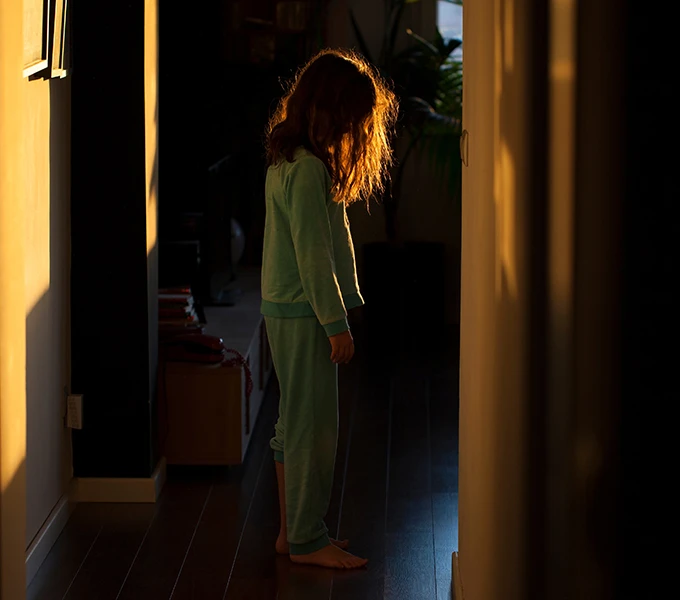
The human brain is an incredible thing. As well as all the marvels it can perform during waking hours, it can even trigger you to roam free while sleeping. Some people find they sleep eat, others might be having their own dance party next to the bed, and we’ve also heard stories of people unlocking their front door and meandering down the street.
If you’re a sleepwalker or you have one in your family, read on to discover the truth about sleepwalking. We’re here with help and tips to prevent it and we’ll also be separating myth from fact when it comes to what causes sleepwalking and whether it’s actually dangerous to wake a sleepwalker.
Whilst there isn’t a definitive cause, it’s believed that people sleepwalk for a variety of reasons, with genetics and family history playing a significant role. You’re more likely to sleepwalk if close relatives have a history of sleepwalking or night terrors.
Stress, anxiety, tiredness and medical conditions can also trigger episodes of sleepwalking. Additionally, disruptions in the normal sleep cycle, like irregular sleep patterns or insufficient sleep, can contribute to sleepwalking behaviour too.
Whilst there are reports of sleepwalking across various age groups, sleepwalking is most common in children aged 6 to 12 years old. It’s estimated that around 15% of children experience sleepwalking at some point during their childhood.
The frequency of sleepwalking tends to decrease with age, with most individuals outgrowing the condition by adolescence or early adulthood. However, some adults may continue to experience sleepwalking episodes throughout their lives. If your child or children sleepwalk, try to create a calming environment and get into a healthy bedtime routine to reduce the likelihood of sleepwalking. Of course, if sleepwalking becomes frequent or is causing distress or potential danger to your child, seek medical advice.

The causes of sleepwalking in adulthood and childhood are believed to be similar but there are additional lifestyle choices that can cause sleepwalking in both age groups.
In both adults and children, the below can be factors:
Genetics: Sleepwalking can run in families, suggesting a genetic link to the condition
Stress and anxiety: Emotional stress, anxiety, or significant life changes may trigger sleepwalking episodes in adults
Sleep deprivation: Not getting enough quality sleep or having irregular sleep patterns can increase the likelihood of sleepwalking
Medications: Certain medications, such as sedatives, antipsychotics, and stimulants, can potentially trigger sleepwalking in susceptible individuals
Medical conditions: Certain medical conditions like sleep apnoea and restless leg syndrome, and some psychiatric disorders such as depression or ADHD have been linked to sleepwalking
High temperature: having a high temperature due to illness can sometimes trigger episodes of sleepwalking
Additional triggers for adults can be alcohol consumption and recreational drug use which disrupt sleep patterns and can increase the risk of sleepwalking. Some adults report sleepwalking episodes only when they’ve been drinking alcohol, so it’s likely that alcohol causes sleepwalking in susceptible adults.
In children, an immature nervous system may also be a cause that they eventually grow out of. Children's nervous systems are still developing, which can lead to disruptions in sleep cycles and possibly trigger sleepwalking episodes.
Truth be told, nothing much. You shouldn’t wake a sleepwalker abruptly as it can startle and disorientate them. It’s safer to gently guide them back to bed or to a safe area while they are sleepwalking. There are several myths surrounding sleepwalking but mostly, they’re not true. Let’s look at some of them here:
‘It’s dangerous to wake a sleep walker’
There are several myths surrounding the dangers of waking a sleepwalker including that the awoken sleepwalker will suffer a heart attack or go into a coma, neither of these are true, of course. Provided you don’t shout at them or use physical force, the myth that it’s dangerous to wake a sleepwalker isn’t true.
‘Sleepwalkers are acting out their dreams’
Sleepwalkers are not acting out their dreams, but rather moving around during non-REM sleep stages. They are not consciously aware of their actions.
‘Sleepwalkers don’t remember sleepwalking’
Many sleepwalkers may recall some fragments of their sleepwalking episode, almost like flashbacks, while others may have no memory of it at all. Memory of a sleepwalking episode can vary from person to person.
‘Sleepwalking is dangerous’
While sleepwalking can potentially lead to injuries if the sleepwalker encounters hazards in their environment, it’s not inherently dangerous if precautions are taken to ensure their safety. It’s especially important to create a safe sleeping environment for children who sleepwalk to prevent accidents.
‘Sleepwalkers are aware and in control’
When sleepwalking you’re in a state of semi-consciousness. Not fully aware of your actions but also not inept either. During an episode of sleepwalking people are stuck somewhere between awake and asleep and sleepwalking takes place during non-REM sleep phases.
‘Sleepwalkers eyes are closed’
As eerie as it looks, during an episode of sleepwalking, the person’s eyes are wide open. They can navigate their way around the home, up and down stairs, unlock doors and operate devices all whilst being asleep. But should they come face to face with a family member it will seem as if they’re looking straight through them. It’s what makes the phenomenon of sleepwalking so fascinating and, slightly unnerving.
‘Drinking warm milk before bed cures sleepwalking’
Sadly not, there’s no evidence to suggest this is true. So what can you do?
There are several ways to help prevent sleepwalking:
Establish a regular sleep schedule: Try to go to bed and wake up at the same time every day to regulate your sleep patterns
Create a relaxing bedtime routine: Develop a calming routine before bed to help you unwind and prepare for sleep
Make your sleep environment as comfortable and calm as possible: Invest in quality bedding and a mattress that’s right for you to ensure you sleep soundly and seamlessly pass through each of the stages of sleep. Not sure of the best mattress? Take our sleepunique® mattress quiz to find out
Reduce stress and anxiety: Practice relaxation techniques, such as deep breathing or meditation, to help manage stress levels that might contribute to sleepwalking
Avoid alcohol and stimulants before bed: These substances can disrupt your sleep and increase the likelihood of sleepwalking episodes. Avoid blue light such as that from a mobile phone or turn your phone to ‘nighttime mode’ in the few hours leading up to bedtime
We hope we’ve helped bust some myths and provided advice that’ll help you or your sleepwalking family member. The good news is that sleepwalking episodes tend to be irregular and in children, they reduce significantly over time. But if sleepwalking persists or becomes a safety concern, consult with a doctor or sleep specialist for further evaluation and treatment options.